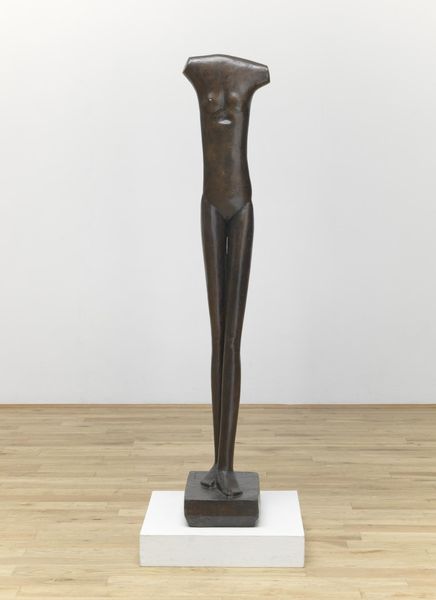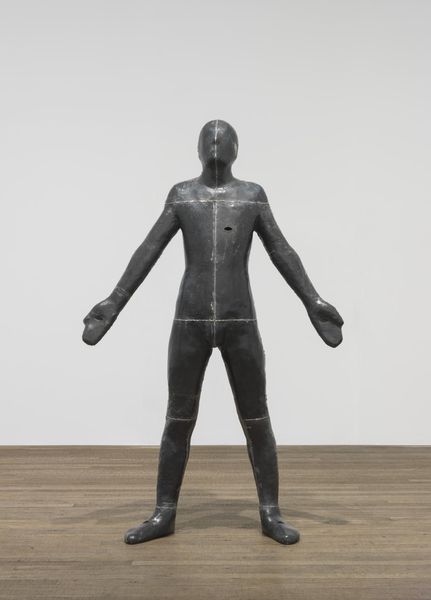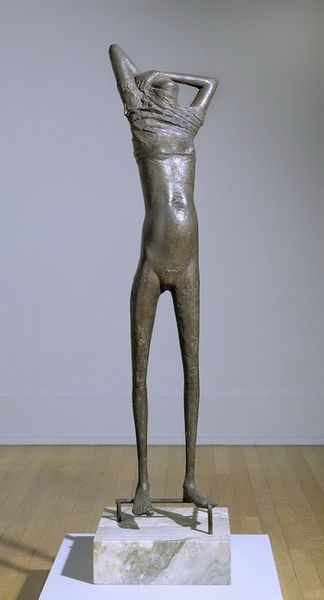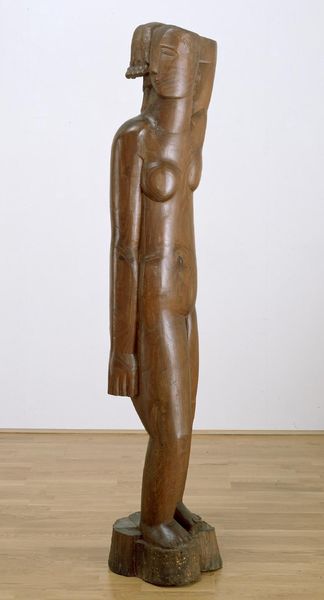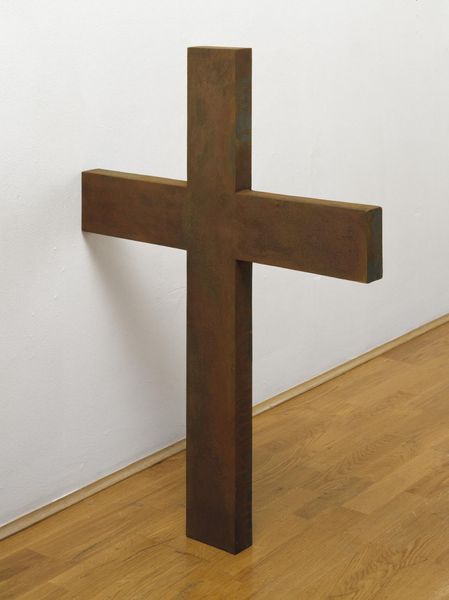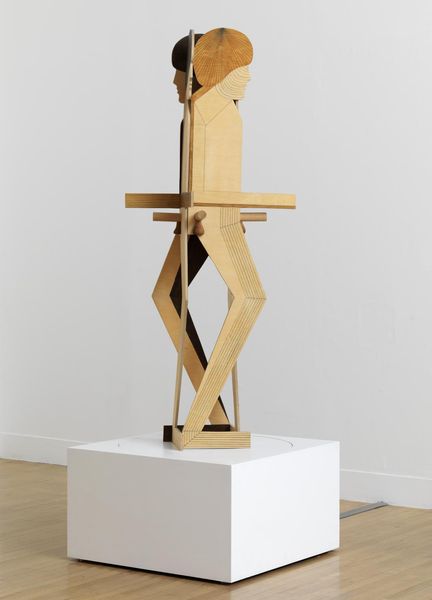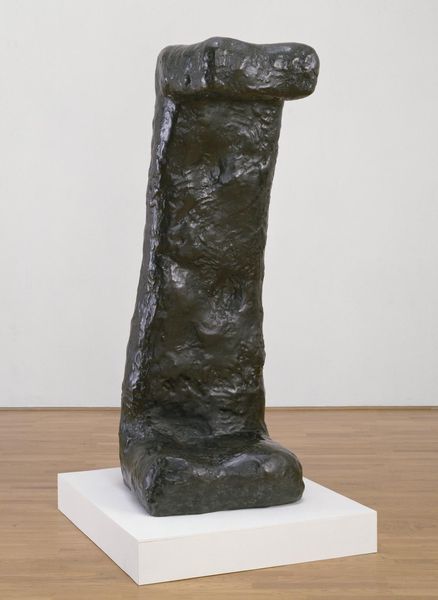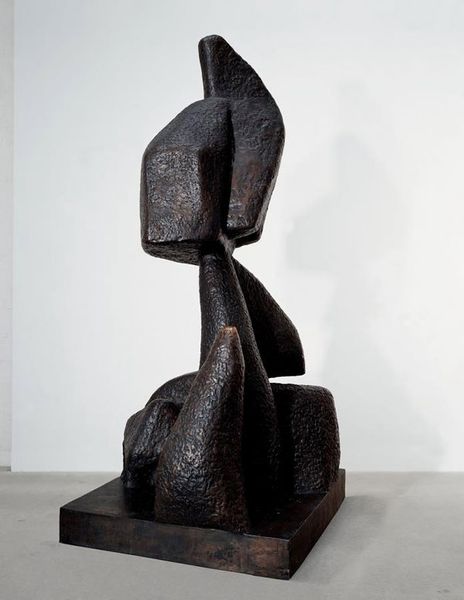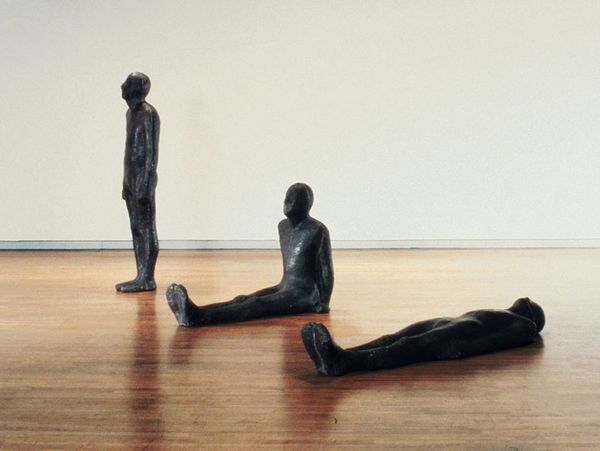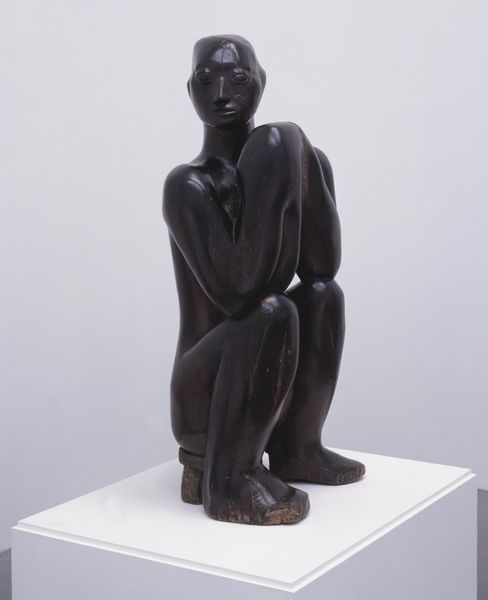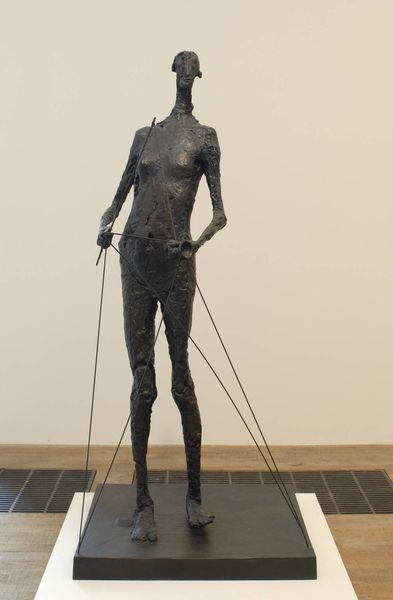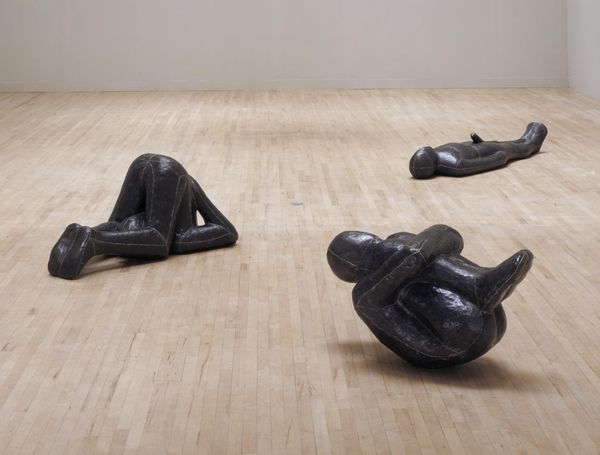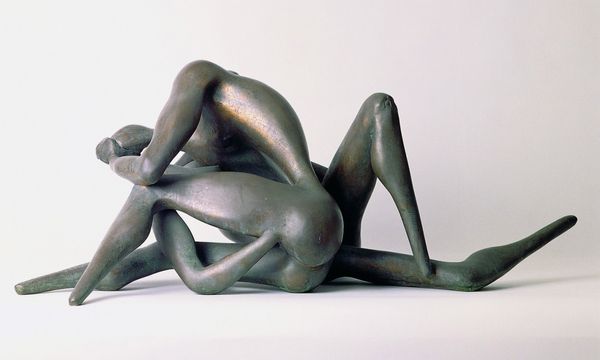
Dimensions: unconfirmed: 1970 x 5260 x 350 mm
Copyright: © Antony Gormley | CC-BY-NC-ND 4.0 DEED, Photo: Tate
Editor: Here we have Antony Gormley's, A Case for an Angel III, from the Tate Collections. It has a kind of stoic presence, but I'm curious – what symbols do you see at play here? Curator: The angel is an ancient symbol, carrying meanings of hope, protection, and messengers between worlds. Gormley's choice of a simple, almost industrial form, strips away the traditionally ornate details. Do you think that impacts its message? Editor: Definitely, it feels more grounded and less ethereal. Curator: Precisely, it becomes a figure of the everyday, perhaps reflecting our own potential for transcendence or connection to something larger. Consider how the rigid wings contrast with the human form – is it a prison or a launchpad? Editor: I see that contrast so clearly now! It makes me consider the limitations and possibilities within myself. Curator: And that's the power of symbols, isn't it? They hold collective meanings while sparking personal reflection. Editor: Thanks, that was insightful. I'll never look at angels the same way again!
Comments
tate 7 months ago
⋮
http://www.tate.org.uk/art/artworks/gormley-a-case-for-an-angel-iii-t07005
Join the conversation
Join millions of artists and users on Artera today and experience the ultimate creative platform.
tate 7 months ago
⋮
Gormley's A Case for an Angel series combines the human form with technology. More reminiscent of aeroplanes than birds, the sculptures in this series provide an unusual variation on the theme of man's desire to fly, both physically and spiritually. Despite their extreme stillness, Gormley's body casts allude to processes of growth and becoming, a kind of internal metamorphosis into a new state of being. A Case for an Angel evokes the notion of flying or gliding as a metaphor for a transcendent possibility, indicated by the term 'angel' in the title. However, the leaden weight of the 'case' anchors the enclosed body firmly on the ground, operating as a physical hindrance from the suggested possibility for spiritual flight. As Gormley explains, the obstruction to the viewer provided by the scale of the sculpture expands this sense of frustration into the gallery space: A Case for an Angel is a declaration of inspiration and imagination. It is an image of a being that might be more at home in the air, brought down to earth. On the other hand it is also an image of somebody who is fatally handicapped, who cannot pass through any door and is desperately burdened. When installed it is a barrier across the space, blocking out the light and blocking out the passage of the viewer. The top of the wings are actually at eye level and describe a kind of horizon beyond which you can't see very much, and so you feel trapped and there is a sense of an invitation to assert yourself in the space against it. (Quoted in Hutchinson, p.136.) Based in London, Gormley has been using his body as a tool and medium for an investigation into metaphysical states of being since the early 1980s. He makes casts of his body, mainly in lead, which smooth out personal contours and emphasise the figure's more formal qualities manifested through poses. This permits him to materialize the sensation of the body's inner space and to create a language of universal human perceptual experience. For Gormley, lead is an aesthetically neutral material: he uses it for its qualities of ordinariness, malleability, denseness and permanence. If it is not allowed to oxidise, its surfaces subtly reflect light while absorbing it, resulting in a dark impenetrable solidity. Visually and radioactively impermeable, lead provides a heavy and poisonous shield, suggesting entombment. The opposing extremes of weighty lead and invisible air, which the body cases combine, illustrate the opposing body and spirit duality in which Gormley's work is grounded. For his public sculpture, the Angel of the North, erected outside Gateshead, Tyneside, in 1998, he used the form of A Case for an Angel, massively scaled-up in weathered steel. Further reading: John Hutchinson, E.H. Gombrich, Lela B. Njatin, Antony Gormley, London 2000, p.61, reproduced p.60 (colour)Gormley: Theweleit, exhibition catalogue, Schleswig-Holsteinischer Kunstverein, Schleswig-Holstein 1999Antony Gormley, exhibition catalogue, Konsthall Malmö, Malmö 1993, pp.46-7, reproduced p.99 (colour) Elizabeth ManchesterMay 2000
